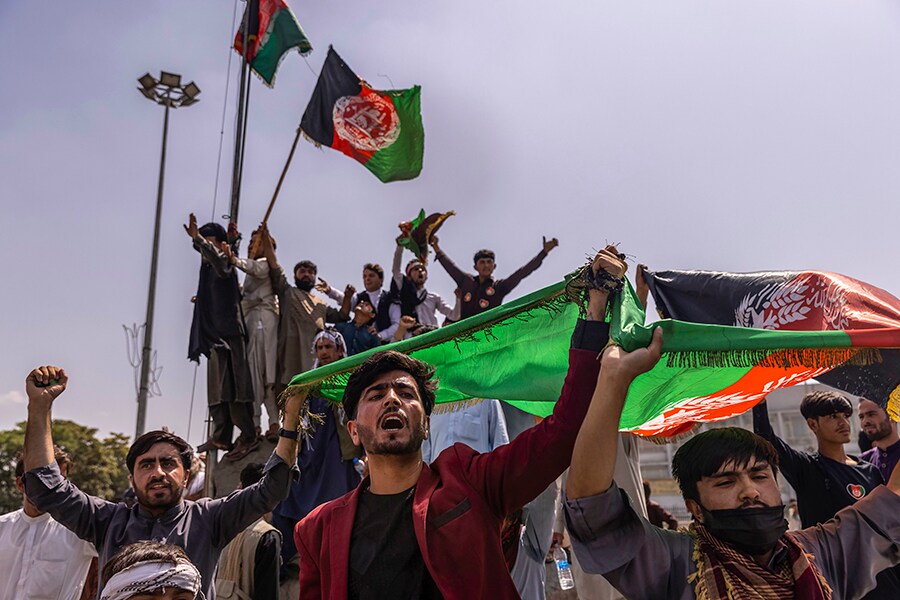
Taliban quash protests and seize enemies, tightening grip on Afghanistan
The Taliban were stepping up an intensive search for people who worked with US and NATO forces, particularly members of the former Afghan security services, according to witnesses and a security assessment prepared for the United Nations
 Protesters, with the flag of the deposed Afghan government, rally against Taliban rule in Kabul, Afghanistan, on Thursday, Aug. 19, 2021. Protesters took to the streets to rally against Taliban rule for the second day on Thursday, this time marching in Kabul, including near the presidential palace.
Protesters, with the flag of the deposed Afghan government, rally against Taliban rule in Kabul, Afghanistan, on Thursday, Aug. 19, 2021. Protesters took to the streets to rally against Taliban rule for the second day on Thursday, this time marching in Kabul, including near the presidential palace.
Image: Victor J. Blue/The New York Times
The Taliban cracked down on protests that erupted in at least four cities in Afghanistan Thursday, and they rounded up opponents despite promises of amnesty, even as fearful workers stayed home and thousands of people continued a frenzied rush to leave the country.
As the Taliban moved to assert control, hundreds of protesters took to the streets for a second day to rally against their rule, this time marching in Kabul, the capital, as well as other cities. Again, the Taliban met them with force, using gunfire and beatings to disperse crowds. And again, the actions of Taliban foot soldiers undermined the leadership’s suggestions that, having taken power, they would moderate the brutality they have long been known for.
The police officers who served the old government have melted away, and instead armed Taliban fighters are operating checkpoints and directing traffic, administering their notions of justice as they see fit, with little consistency from one to another.
The Taliban were stepping up an intensive search for people who worked with U.S. and NATO forces, particularly members of the former Afghan security services, according to witnesses and a security assessment prepared for the United Nations. Although the Taliban have said there would be no reprisals, there have been arrests, property seizures and scattered reports of reprisal killings.
Kabul’s international airport remained a scene of desperation, as thousands struggled to get in and board flights out.
©2019 New York Times News Service




